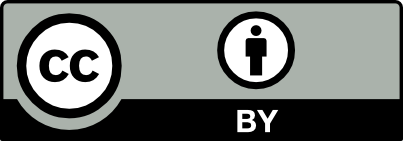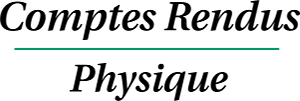[Du perceptron au cervelet]
The perceptron has served as a prototypical neuronal learning machine in the physics community interested in neural networks and artificial intelligence, which included Gérard Toulouse as one of its prominent figures. It has also been used as a model of Purkinje cells of the cerebellum, a brain structure involved in motor learning, in the early influential theories of David Marr and James Albus. We review these theories, more recent developments in the field, and highlight questions of current interest.
Le perceptron a servi de modèle prototypique de machine d’apprentissage neuronale au sein de la communauté des physiciens intéressés par les réseaux neuronaux et l’intelligence artificielle, dont Gérard Toulouse était l’une des plus éminentes figures. Il a également été utilisé comme modèle des cellules de Purkinje du cervelet, une structure cérébrale impliquée dans l’apprentissage moteur, dans les premières théories influentes de David Marr et James Albus. Nous passons en revue ces théories, les développements plus récents dans le domaine, et mettons en lumière des questions d’intérêt actuel.
Révisé le :
Accepté le :
Publié le :
Mots-clés : Perceptron, Cervelet, Neurosciences théoriques
Nicolas Brunel 1 ; Vincent Hakim 2 ; Jean-Pierre Nadal 2, 3
 CC-BY 4.0
CC-BY 4.0
@article{CRPHYS_2025__26_G1_463_0,
author = {Nicolas Brunel and Vincent Hakim and Jean-Pierre Nadal},
title = {From the perceptron to the cerebellum},
journal = {Comptes Rendus. Physique},
pages = {463--477},
year = {2025},
publisher = {Acad\'emie des sciences, Paris},
volume = {26},
doi = {10.5802/crphys.251},
language = {en},
}
Nicolas Brunel; Vincent Hakim; Jean-Pierre Nadal. From the perceptron to the cerebellum. Comptes Rendus. Physique, Volume 26 (2025), pp. 463-477. doi: 10.5802/crphys.251
[1] Solvable model of a spin-glass, Phys. Rev. Lett., Volume 35 (1975) no. 26, pp. 1792-1795 | DOI
[2] Coexistence of spin-glass and ferromagnetic orderings, Phys. Rev. Lett., Volume 47 (1981) no. 3, pp. 201-204 | DOI
[3] Theory of the frustration effect in spin glasses: I, Commun. Phys., Volume 2 (1977), pp. 115-119
[4] Spin Glass Theory and Beyond, World Scientific, Singapore, 1986 | DOI | MR
[5] Neural networks and physical systems with emergent collective computational abilities, Proc. Natl. Acad. Sci. USA, Volume 79 (1982) no. 8, pp. 2554-2558 | DOI | MR | Zbl
[6] Spin glass model of learning by selection, Proc. Natl. Acad. Sci. USA, Volume 83 (1986) no. 6, pp. 1695-1698 | DOI | MR
[7] Networks of formal neurons and memory palimpsests, Europhys. Lett., Volume 1 (1986) no. 10, pp. 535-542 | DOI
[8] Information storage in sparsely coded memory nets, Network: Comput. Neural Syst., Volume 1 (1990) no. 1, pp. 61-74 | DOI | MR | Zbl
[9] Information capacity of a perceptron, J. Phys. A: Math. Gen., Volume 25 (1992) no. 19, pp. 5017-5037 | DOI | MR | Zbl
[10] The Synaptic Organization of the Brain, Oxford University Press, Oxford, 2003
[11] Computational principles of supervised learning in the cerebellum, Annu. Rev. Neurosci., Volume 41 (2018) no. 1, pp. 233-253 | DOI
[12] The theory and neuroscience of cerebellar cognition, Annu. Rev. Neurosci., Volume 42 (2019) no. 1, pp. 337-364 | DOI
[13] The cerebellar cortex, Annu. Rev. Neurosci., Volume 45 (2022) no. 1, pp. 151-175 | DOI
[14] Monoamine pathways to the cerebellum and cerebral cortex, Experientia, Volume 23 (1967), pp. 838-938 | DOI
[15] Serotonergic input into the cerebellar cortex modulates anxiety-like behavieor, J. Neurosci., Volume 45 (2025) no. 14, e1825242024 | DOI
[16] Chapter 5 Cholinergic innervation and receptors in the cerebellum, The Cerebellum: From Structure to Control (C. I. De Zeeuw; P. Strata; J. Voogd, eds.) (Progress in Brain Research), Volume 114, Elsevier, Amsterdam, 1997, pp. 67-96 | DOI
[17] Acetylcholine modulates cerebellar granule cell spiking by regulating the balance of synaptic excitation and inhibition, J. Neurosci., Volume 40 (2020) no. 14, pp. 2882-2894 | DOI
[18] Quantitative study of granule and Purkinje cells in the cerebellar cortex of the rat, J. Comp. Neurol., Volume 274 (1988), pp. 151-157 | DOI
[19] Quantitative studies on the mammalian cerebellum, Prog. Neurobiol., Volume 36 (1991), pp. 437-463 | DOI
[20] The entire trajectories of single olivocerebellar axons in the cerebellar cortex and their contribution to cerebellar compartmentalization, J. Neurosci., Volume 21 (2001) no. 19, pp. 7715-7723 | DOI
[21] The Cerebellum as a Neuronal Machine, Springer-Verlag, Berlin, 1967 | DOI
[22] A theory of cerebellar cortex, J. Physiol., Volume 202 (1969), pp. 437-470 | DOI
[23] A theory of cerebellar function, Math. Biosci., Volume 10 (1971), pp. 26-51 | DOI
[24] Climbing fibre induced depression of both mossy fibre responsiveness and glutamate sensitivity of cerebellar Purkinje cells, J. Physiol., Volume 324 (1982), pp. 113-134 | DOI
[25] Purkinje-cell plasticity and cerebellar motor learning are graded by complex-spike duration, Nature, Volume 510 (2014), pp. 529-532 | DOI
[26] The nature of reinforcement in cerebellar learning, Neurobiol. Learning Memory, Volume 70 (1998) no. 1–2, pp. 150-176 | DOI
[27] Neural population dynamics during reaching, Nature, Volume 487 (2012) no. 7405, pp. 51-56 | DOI
[28] On simplicity and complexity in the brave new world of large-scale neuroscience, Curr. Opin. Neurobiol., Volume 32 (2015), pp. 148-155 | DOI
[29] Neural manifolds for the control of movement, Neuron, Volume 94 (2017) no. 5, pp. 978-984 | DOI
[30] Neural population geometry: An approach for understanding biological and artificial neural networks, Curr. Opin. Neurobiol., Volume 70 (2021), pp. 137-144 | DOI
[31] Geometrical and statistical properties of systems of linear inequalities with applications in pattern recognition, IEEE Trans., Volume EC-14 (1965), pp. 326-334 | Zbl
[32] Learning with Kernels: Support Vector Machines, Regularization, Optimization, and Beyond, The MIT Press, Cambridge, 2001 | DOI
[33] Attention is all you need, Advances in Neural Information Processing Systems (I. Guyon; U. Von Luxburg; S. Bengio; H. Wallach; R. Fergus; S. Vishwanathan; R. Garnett, eds.), Curran Associates, Inc., New York, 2017
[34] Linking connectivity, dynamics, and computations in low-rank recurrent neural networks, Neuron, Volume 99 (2018) no. 3, pp. 609-623 | DOI
[35] Opening the black box: low-dimensional dynamics in high-dimensional recurrent neural networks, Neural Comput., Volume 25 (2013) no. 3, pp. 626-649 | DOI | MR | Zbl
[36] Re-evaluating circuit mechanisms underlying pattern separation, Neuron, Volume 101 (2019) no. 4, pp. 584-602 | DOI
[37] Structure within the cerebellar input layer enables lossless sparse encoding, Network, Volume 83 (2014), pp. 960-974 | DOI
[38] Sparseness and expansion in sensory representations, Neuron, Volume 83 (2014) no. 5, pp. 1213-1226 | DOI
[39] Optimal degrees of synaptic connectivity, Neuron, Volume 93 (2017) no. 5, pp. 1153-1164 | DOI
[40] Sparse synaptic connectivity is required for decorrelation and pattern separation in feedforward networks, Nat. Commun., Volume 8 (2017) no. 1, 1116 | DOI
[41] et al. Cerebellar granule cells acquire a widespread predictive feedback signal during motor learning, Nat. Neurosci., Volume 20 (2017) no. 5, pp. 727-734 | DOI
[42] Cerebellar granule cells encode the expectation of reward, Nature, Volume 544 (2017) no. 7648, pp. 96-100 | DOI
[43] Sensorimotor representations in cerebellar granule cells in larval zebrafish are dense, spatially organized, and non-temporally patterned, Curr. Biol., Volume 27 (2017) no. 9, pp. 1288-1302 | DOI
[44] Cerebellar granule cell axons support high-dimensional representations, Nat. Neurosci., Volume 24 (2021) no. 8, pp. 1142-1150 | DOI
[45] Local synaptic inhibition mediates cerebellar granule cell pattern separation and enables learned sensorimotor associations, Nat. Neurosci., Volume 27 (2024), pp. 689-701 | DOI
[46] The perceptron: a probabilistic model for information storage and organization in the brain, Psych. Rev., Volume 65 (1958), pp. 386-408 | DOI
[47] Principles of Neurodynamics, Spartan Books, Washington DC, 1962
[48] The Nature of Statistical Learning Theory, Springer-Verlag, Berlin, 1999 | MR
[49] Non-holographic associative memory, Nature, Volume 222 (1969), pp. 960-962 | DOI
[50] The phase space of interactions in neural network models, J. Phys. A, Volume 21 (1988), pp. 257-270 | DOI | MR | Zbl
[51] Optimal storage properties of neural network models, J. Phys. A: Math. Gen., Volume 21 (1988) no. 1, pp. 271-284 | MR | DOI
[52] Optimal information storage and the distribution of synaptic weights: perceptron versus Purkinje cell, Neuron, Volume 43 (2004), pp. 745-757 | DOI
[53] What can we learn from synaptic weight distributions?, Trends Neurosci., Volume 30 (2007), pp. 622-629 | DOI
[54] Properties of unitary granule cell Purkinje cell synapses in adult rat cerebellar slices, J. Neurosci., Volume 22 (2002), pp. 9668-9678 | DOI
[55] Storage of correlated patterns in standard and bistable Purkinje cell models, PLoS Comput. Biol., Volume 8 (2012), e1002448 | DOI | MR
[56] Optimal properties of analog perceptrons with excitatory weights, PLoS Comput. Biol., Volume 9 (2013), e1002919 | DOI
[57] Cerebellar LTD and pattern recognition by purkinje cells, Neuron, Volume 54 (2007), pp. 121-136 | DOI
[58] Nonspecific synaptic plasticity improves the recognition of sparse patterns degraded by local noise, Sci. Rep., Volume 7 (2017), 46550 | DOI
[59] Adaptive filter model of the cerebellum, Biol. Cybern., Volume 45 (1982), pp. 190-206 | DOI
[60] Neural network model of the cerebellum: Temporal discrimination and the timing of motor responses, Neural Comput., Volume 6 (1994), pp. 38-55 | DOI
[61] Timing mechanisms in the cerebellum: testing predictions of a large-scale computer simulation, J. Neurosci., Volume 20 (2000) no. 14, pp. 5516-5525 | DOI
[62] Cerebellar motor learning: when is cortical plasticity not enough?, PLoS Comput. Biol., Volume 3 (2007), e197 | DOI
[63] A temporal basis for predicting the sensory consequences of motor commands in an electric fish, Nat. Neurosci., Volume 17 (2014), pp. 416-422 | DOI
[64] Mechanisms and functional roles of glutamatergic synapse diversity in a cerebellar circuit, Elife, Volume 5 (2016), e15872 | DOI
[65] Graded heterogeneity of metabotropic signaling underlies a continuum of cell-intrinsic temporal responses in unipolar brush cells, Nat. Commun., Volume 12 (2021), 5491 | DOI
[66] Synaptic diversity enables temporal coding of coincident multisensory inputs in single neurons, Nat. Neurosci., Volume 18 (2015), pp. 718-727 | DOI
[67] Synaptic basis of a sub-second representation of time in a neural circuit model, Nat. Commun., Volume 13 (2022), 7902 | DOI
[68] The cerebellar microcircuit as an adaptive filter: experimental and computational evidence, Nat. Rev. Neurosci., Volume 11 (2010), pp. 30-43 | DOI
[69] At the edge of chaos: How cerebellar granular layer network dynamics can provide the basis for temporal filters, PLoS Comput. Biol., Volume 11 (2015), e1004515 | DOI
[70] Metabotropic glutamate receptor activation in cerebellar purkinje cells as substrate for adaptive timing of the classically conditioned eye-blink response, J. Neurosci., Volume 16 (1996) no. 11, pp. 3760-3774 | DOI
[71] A biophysical model of synaptic delay learning and temporal pattern recognition in a cerebellar Purkinje cell, J. Comput. Neurosci., Volume 17 (2004), pp. 149-164 | DOI
[72] Encoding of error and learning to correct that error by the Purkinje cells of the cerebellum, Nat. Neurosci., Volume 21 (2018), pp. 736-743 | DOI
[73] Prediction signals in the cerebellum: beyond supervised motor learning, Elife, Volume 9 (2020), e54073 | DOI
[74] Predictive and reactive reward signals conveyed by climbing fiber inputs to cerebellar Purkinje cells, Nat. Neurosci., Volume 22 (2019), pp. 950-962 | DOI
[75] Cerebellar climbing fibers multiplex movement and reward signals during a voluntary movement task in mice, Commun. Biol., Volume 6 (2023), 924 | DOI
[76] Adaptive gain control of vestibuloocular reflex by the cerebellum, J. Neurophysiol., Volume 39 (1976) no. 5, pp. 954-969 | DOI
[77] Visual influence on rabbit horizontal vestibulo-ocular reflex presumably effected via the cerebellar flocculus, Brain Res., Volume 65 (1974) no. 1, pp. 170-174 | DOI
[78] The vestibulo-ocular reflex as a model system for motor learning: what is the role of the cerebellum?, Cerebellum, Volume 3 (2004), pp. 188-192 | DOI
[79] Cerebellar-dependent adaptive control of primate saccadic system, J. Neurophysiol., Volume 44 (1980) no. 6, pp. 1058-1076 | DOI
[80] Chapter 6 - cerebellum-dependent motor learning: Lessons from adaptation of eye movements in primates, Cerebellar Learning (N. Ramnani, ed.) (Progress in Brain Research), Volume 210, Elsevier, Amsterdam, 2014, pp. 121-155 | DOI
[81] Complex spike activity in the oculomotor vermis of the cerebellum: a vectorial error signal for saccade motor learning?, J. Neurophysiol., Volume 100 (2008) no. 4, pp. 1949-1966 | DOI
[82] et al. Cerebellar learning using perturbations, eLife, Volume 7 (2018), e31599 | DOI
[83] Simple statistical gradient-following algorithms for connectionist reinforcement learning, Mach. Learn., Volume 8 (1992), pp. 229-256 | DOI | Zbl
[84] Learning in neural networks by reinforcement of irregular spiking, Phys. Rev. E, Volume 69 (2004) no. 4, 041909 | MR
[85] A cerebellar learning model of vestibulo-ocular reflex adaptation in wild-type and mutant mice, J. Neurosci., Volume 34 (2014) no. 21, pp. 7203-7215 | DOI
[86] Beyond parallel fiber LTD: the diversity of synaptic and non-synaptic plasticity in the cerebellum, Nat. Neurosci., Volume 4 (2001) no. 5, pp. 467-475 | DOI
[87] Distributed synergistic plasticity and cerebellar learning, Nat. Rev. Neurosci., Volume 13 (2012), pp. 619-635 | DOI
[88] et al. A transcriptomic atlas of the mouse cerebellum reveals regional specializations and novel cell types, Nature, Volume 598 (2021), pp. 214-219 | DOI
[89] et al. Structured cerebellar connectivity supports resilient pattern separation, Nature, Volume 613 (2023) no. 7944, pp. 543-549 | DOI
[90] et al. A deep-learning strategy to identify cell types across species from high-density extracellular recordings, Cell, Volume 188 (2025), pp. 2218-2234 | DOI
[91] Control of mental activities by internal models in the cerebellum, Nat. Rev. Neurosci., Volume 9 (2008) no. 4, pp. 304-313 | DOI
[92] Communication at Les Treilles workshop “Cerebellum and Learning” (2024) https://lestreilles.hypotheses.org/10245 (Accessed 2024-12-11)
[93] Discharge frequencies in the cerebral and cerebellar cortex, Proc. Phys. Soc., Volume 83 (1935), pp. 32-33
[94] et al. High-frequency organization and synchrony of activity in the purkinje cell layer of the cerebellum, Neuron, Volume 58 (2008), pp. 775-788 | DOI
[95] et al. Electrical coupling mediates tunable low-frequency oscillations and resonance in the cerebellar Golgi cell network, Neuron, Volume 61 (2009), pp. 126-139 | DOI
[96] Backpropagation and the brain, Nat. Rev. Neurosci., Volume 21 (2020) no. 6, pp. 335-346 | DOI
Cité par Sources :
Commentaires - Politique




